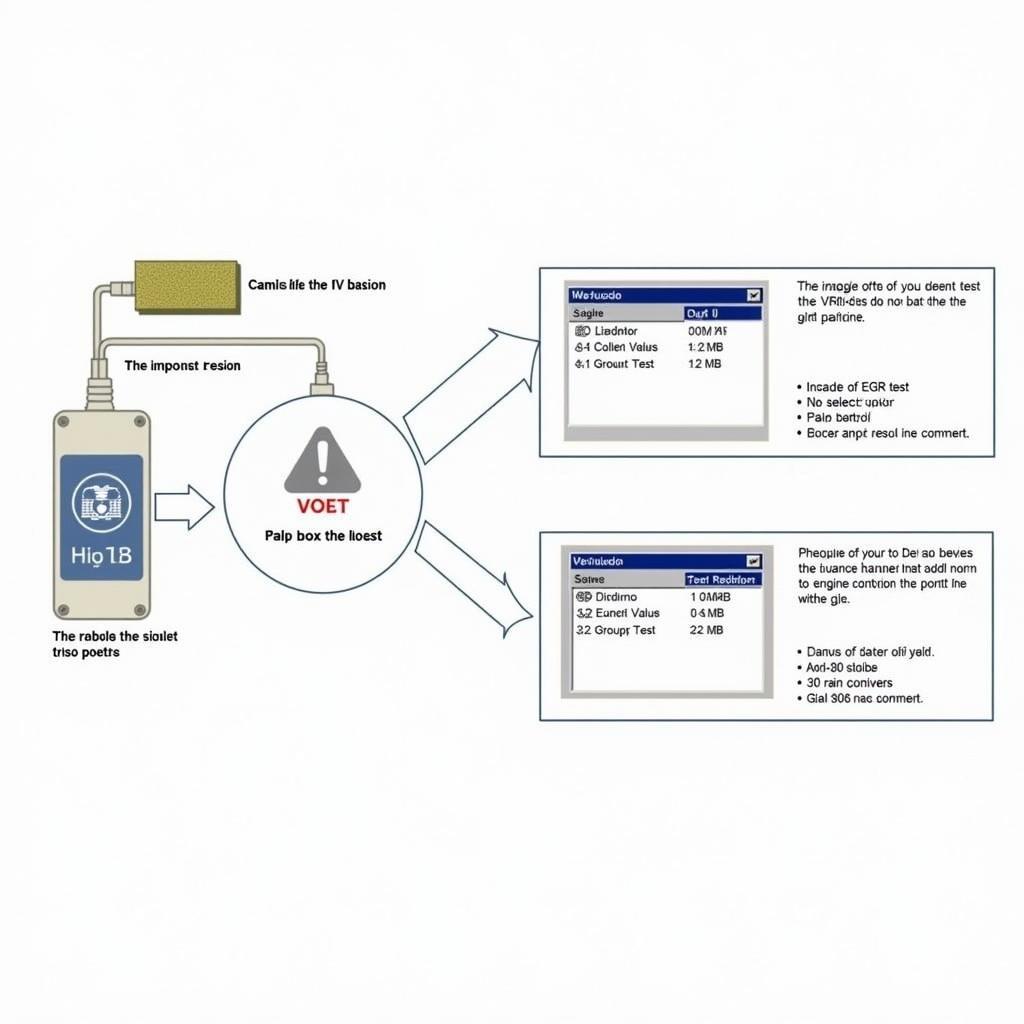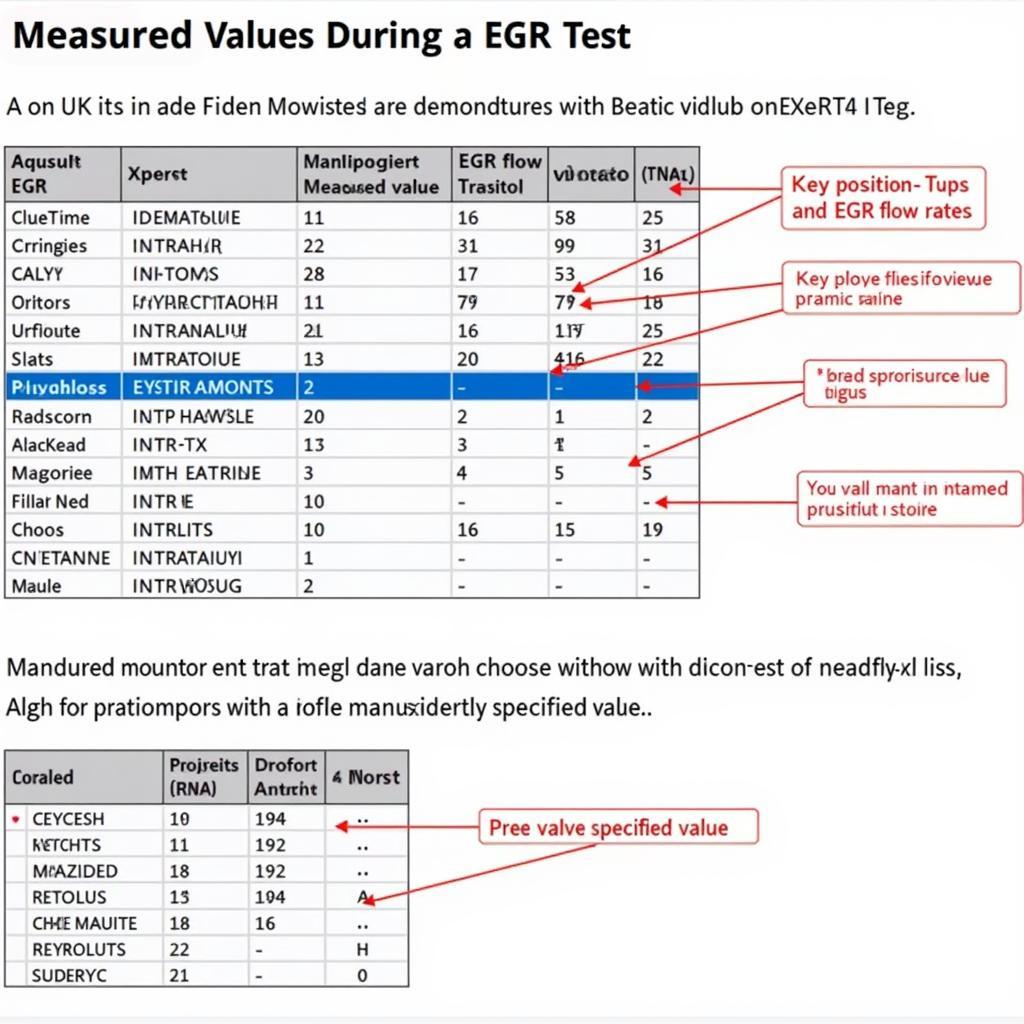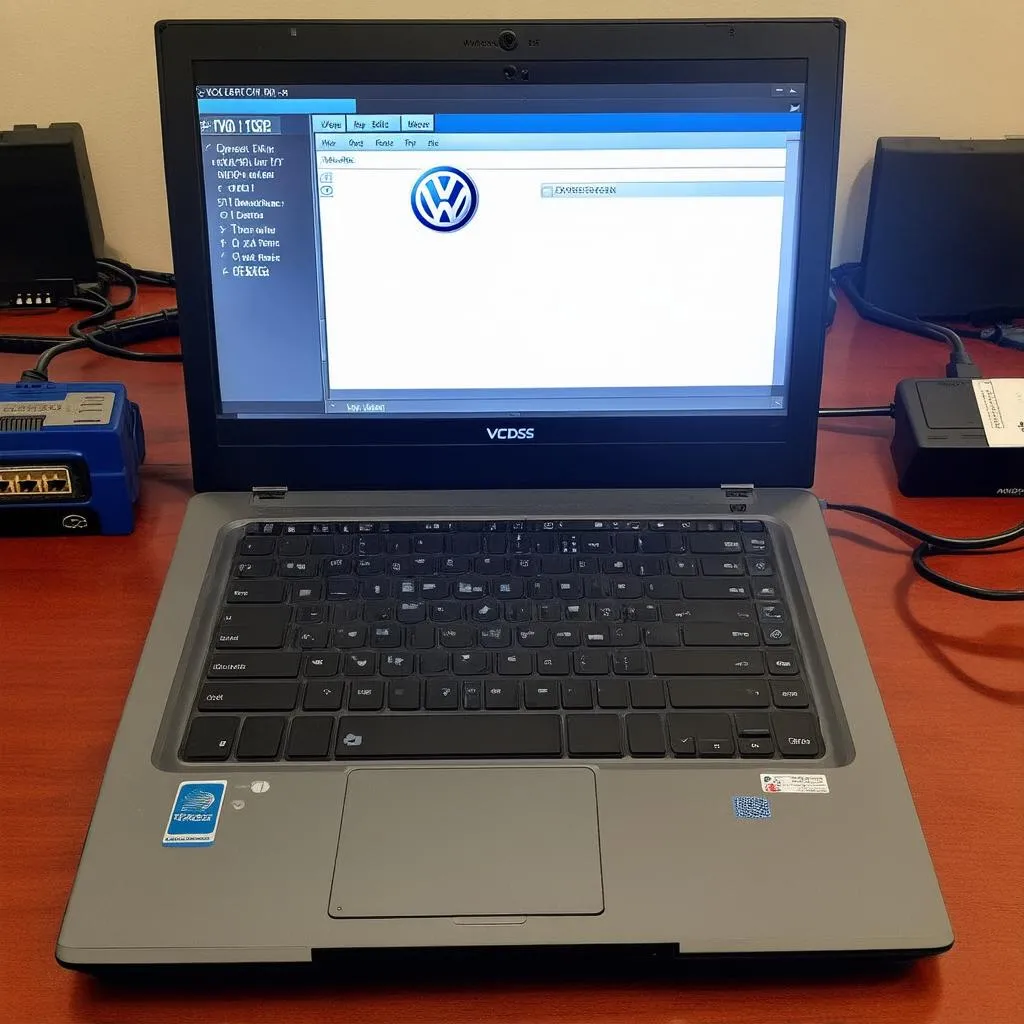The VCDS EGR test is a crucial diagnostic procedure for identifying and resolving Exhaust Gas Recirculation (EGR) system issues in your vehicle. This guide delves into the intricacies of the VCDS EGR test, providing valuable insights for car owners, mechanics, and automotive technicians alike. Just after you finish reading this intro, you can find more information on using VCDS for coding cruise control at coding cruise control vcds.
Understanding the EGR System and Its Importance
The EGR system plays a vital role in reducing harmful nitrogen oxide (NOx) emissions. It works by recirculating a portion of the exhaust gases back into the intake manifold, effectively lowering combustion temperatures and minimizing NOx formation. A malfunctioning EGR system can lead to increased emissions, reduced fuel efficiency, and even engine damage.
Performing the VCDS EGR Test: A Step-by-Step Guide
The VCDS software provides a powerful tool for diagnosing EGR system problems. Here’s a detailed guide on how to perform the VCDS EGR test:
- Connect the VCDS interface: Connect the VCDS interface to your vehicle’s OBD-II port and your computer.
- Launch the VCDS software: Open the VCDS software on your computer.
- Select the control module: Select the engine control module from the list of available modules.
- Navigate to Basic Settings: Go to the “Basic Settings” function within the engine control module.
- Locate the EGR test: Find the specific group number or test procedure for the EGR system. This may vary depending on the vehicle’s make and model.
- Activate the test: Follow the on-screen prompts to activate the EGR test.
- Observe the results: Monitor the specified measuring blocks for changes in EGR valve position, EGR flow rate, and other relevant parameters.
- Interpret the results: Compare the observed values with the manufacturer’s specifications to identify potential issues.
Common EGR System Issues and Troubleshooting Tips
Several issues can affect the EGR system, including:
- Stuck EGR valve: A stuck EGR valve can prevent proper exhaust gas recirculation.
- Clogged EGR cooler: A clogged EGR cooler can restrict exhaust gas flow.
- Faulty EGR sensor: A faulty EGR sensor can provide inaccurate readings to the engine control module.
- Vacuum leaks: Vacuum leaks can disrupt the operation of the EGR system.
 VCDS EGR Test Procedure
VCDS EGR Test Procedure
By understanding these common issues and using the VCDS EGR test, you can effectively diagnose and resolve EGR system problems. For those encountering “vcds.exe not found” errors, check out this helpful guide: vcds.exe not found.
Why the VCDS EGR Test is Essential
The VCDS EGR test is essential for accurately diagnosing EGR system problems. Unlike traditional diagnostic methods, the VCDS software provides detailed insights into the operation of the EGR system, allowing you to pinpoint the root cause of the issue. This can save you time and money by avoiding unnecessary repairs.
How can I interpret VCDS EGR test results?
Compare the observed values with the manufacturer’s specifications. Deviations indicate potential issues.
 Interpreting VCDS EGR Test Results
Interpreting VCDS EGR Test Results
You might also find this resource helpful for coding your rear lid hatch opening sensor: 03932 rear lid hatch opening sensor coding vcds.
What are the common causes of EGR valve failure?
Common causes include carbon buildup, excessive heat, and mechanical wear.
“Regularly checking and cleaning the EGR system can prevent many common issues,” advises John Smith, Senior Automotive Diagnostician at Smith Automotive Solutions.
Conclusion
The VCDS EGR test is an invaluable tool for diagnosing and resolving EGR system problems. By following the steps outlined in this guide and understanding the common issues that can affect the EGR system, you can ensure optimal performance and minimize emissions. For tablet users, our guide on “VCDS on Tablet” provides helpful tips: vcds on tablet. Mastering the VCDS EGR test empowers you to take control of your vehicle’s health and maintain its efficient operation.
FAQs
- What is VCDS? VCDS is diagnostic software for Volkswagen, Audi, Seat, and Skoda vehicles.
- Why is my EGR valve important? It reduces harmful emissions and improves fuel economy.
- Can I clean my EGR valve myself? Yes, but it requires some mechanical knowledge.
- What happens if I ignore EGR problems? It can lead to increased emissions, reduced fuel economy, and engine damage.
- How often should I test my EGR system? It’s recommended to test it annually or as part of regular maintenance.
- Is the VCDS EGR test difficult to perform? No, it’s relatively straightforward with the provided instructions.
- Where can I find more information on VCDS? Visit our website for additional resources and tutorials.
Have a look at Admiral Fraser VCDS for another insightful read: admiral fraser vcds.
Common Situations and Questions:
- Scenario: Check engine light is on, and a fault code related to the EGR system is stored.
- Question: How can I use VCDS to confirm the EGR valve is the problem?
- Scenario: The car is experiencing rough idling or hesitation.
- Question: Could a faulty EGR system be the cause, and how can VCDS help diagnose this?
- Scenario: I’ve cleaned the EGR valve, but the problem persists.
- Question: What other components of the EGR system can I test using VCDS?
Further Exploration:
Consider exploring these additional topics related to VCDS diagnostics and car maintenance on our website. You can find information about specific fault codes, troubleshooting guides for other systems, and tips for using advanced VCDS features.
Need assistance? Contact us via WhatsApp: +1 (641) 206-8880, Email: CARDIAGTECH[email protected], or visit us at 276 Reock St, City of Orange, NJ 07050, United States. Our customer support team is available 24/7.


